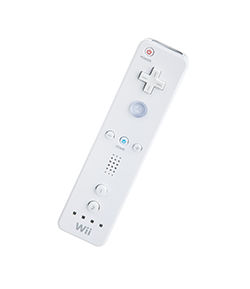Teaching physics with toys
It turns out the Nintendo “Wiimote” can be used for more than just playing “Super Mario Brothers.” A team of TCNJ researchers is helping physics teachers use the handheld controllers to conduct classroom experiments.

 It turns out the “Wiimote”—the handheld controller that’s part of the immensely popular Nintendo Wii game system—can be used for more than just playing “Super Mario Brothers.”
It turns out the “Wiimote”—the handheld controller that’s part of the immensely popular Nintendo Wii game system—can be used for more than just playing “Super Mario Brothers.”
In an article published in the national journal The Physics Teacher, TCNJ professor Romulo Ochoa and former students Frank G. Rooney ’10 and William J. Somers ’09 detail how physics educators can use Wiimotes to conduct introductory experiments in the classroom.
The two main components of the Wiimote are its three-axis accelerometer, which measures the rate of change of velocity with respect to time in three dimensions, and its Bluetooth connection, which allows wireless communication with a host computer, Somers explained. “Accelerometers are [normally] expensive and usually have wires connected to a computer that reads the values they report,” Ochoa said. By contrast, the Wiimote, which measures the same data, is “inexpensive and…not tethered to a computer,” thus making it an attractive alternative for physics teachers in cash-strapped school districts.
Using freeware programs that enable users to access the data a Wiimote transmits, the TCNJ team “developed software that took [those] files and analyzed them in Excel or our own computer program,” Somers said.
Ochoa, who is now preparing Wiimote experiments that he plans to use in TCNJ’s general physics lab next fall, said he first saw the Wiimote’s potential as a learning tool while playing “Wii Sports” with his son. The idea of using the controllers in the classroom is picking up steam, he explained, adding that Notre Dame, Iowa State University, Stanford University, and Berkeley are following suit.
Ochoa isn’t the only TCNJ professor to have incorporated the Wiimote into his research. Several years ago, Teresa Nakra, associate professor of music, and Chris Ault, associate professor of interactive multimedia, were part of a team that developed the Virtual Maestro Interactive Conducting Kiosk, which let users “conduct” a video orchestra using a Wiimote.
Watch TCNJ students conduct a video orchestra using a Wiimote in this online-exclusive video.
Posted on June 8, 2011

